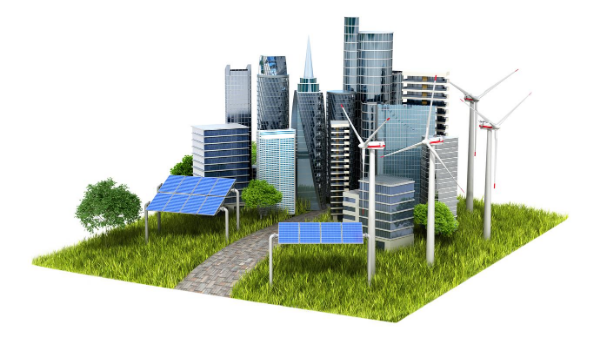Authors
[Read time: 6 minutes]
Just over a year ago, the UK Government announced its goal for the UK to be Net Zero Carbon by 2050. This goal was enshrined in UK law via an addition to the Climate Change Act 2008 and has led to the UK being touted regularly as the first country with a legally-binding net zero target to be achieved by 2050.
There is debate about the exact definition of Net Zero Carbon but, for the purpose of the present article, ‘the aim to reduce greenhouse gases emissions so that they are 100% lower than the 1990 baseline (which equates to net zero)’ will suffice.
Further, the UK and virtually every other country is a signatory to the Paris Agreement (although Donald Trump has commenced the US’ withdrawal), which is part of the United Nations Framework Convention on Climate Change. It has the broad aim of keeping climate change below c.1.5 degrees Celsius above pre-industrial levels – albeit there is no direct sanction for breaching the Paris Agreement other than a “naming and shaming” process.
This article will explore some of the key challenges that the UK Government faces to rebuild the economy post-lockdown whilst managing and meeting its environmental obligations.
Growing green infrastructure
Many have welcomed the Government’s climate targets and are beginning to appreciate the urgency of climate change. However, with infrastructure being touted as a key driver for post-pandemic recovery, how does this tie in to the net zero target?
Some may say that COVID-19 has brought about a once-in-a-generation opportunity to make real change. That could well be true, and to return to normality post-lockdown would be something of a tragedy, yet this is likely to be an area of intense debate. There have already been failures to take the net zero target into account when planning the HS2 railway and the push back on the third runway at Heathrow was primarily forced by the court’s ruling that Ministers did not adequately take into account the Government’s climate change commitments.
This interplay between infrastructure, growth and the environment is a real 21st century conundrum. It will take brave businesses and a Government willing to tackle the dichotomy between often initially-expensive green investments and the country’s appetite for a V-shaped economic recovery. If this is not managed carefully, the Government may see an upswing in legal challenges for net zero target breaches.
As recently as 7 July 2020, pressure group Plan B wrote to Boris Johnson and Rishi Sunak threatening legal action against their post-pandemic recovery plan and arguing that the Government’s £3 billion “green spending” announcement is ‘no more than a fig-leaf for the Government’s new deal for polluters’. This acts as clear evidence that climate activists and green investors will be looking for ways to block infrastructure projects if they are not properly considered from a net zero perspective.
Reporting on progress
In 2017 the Department for Business, Energy & Industrial Strategy (BEIS) issued a Clean Growth policy which stated that carbon emissions have been cut by almost 40% in the past 30 years, leaving the UK with a further 30 years to meet the additional 60% reduction required.
Progress will continue to be monitored through 5-yearly carbon budgets under the Climate Change Act 2008. The Government has recently abolished the CRC Energy Efficiency Scheme and replaced it, in part, with a mandatory carbon reporting framework known as Streamlined Energy and Carbon Reporting. The reporting framework applies to financial years started after April 2019 and will lead to c.12,000 businesses with £36million+ turnover or 250+ employees being brought under mandatory carbon accounting rules as a result.
Success so far is attributable largely to the switch from coal to gas and renewables in the production of electricity. The UK recently had the longest run (67 consecutive days) of coal-free electricity generation since the industrial revolution and there is now a working assumption that, well before 2050, we will reach a point whereby electricity use in buildings will not add to the carbon footprint.
Where we have made considerably less progress is on the decarbonisation of transport and the heating of domestic and non-domestic buildings. In the UK, overwhelmingly, the next hurdle to overcome is the decarbonisation of heat.
Turning up (or down) the decarbonisation of heat
Rather than a ‘hurdle’ this challenge is more akin to a Grand National-sized fence, where the UK is a horse that has already run 2 miles and is not even halfway home yet.
Heating (both domestic and industrial) contributes almost a third of UK national emissions and these have shown little improvement. The Government recognises this and has been running a renewable heat incentive scheme (RHI) which focused on the production of low carbon heat. It is currently consulting on the next steps post-RHI as it continues to promote renewable heat.
It is assumed that the necessary electrification of heat will happen through renewables. However, as there are predictions that electricity consumption is to double by 2050/2060, it is reasonable to ask whether we can produce enough electricity in a green way whilst meeting peaks in demand. The development of batteries may hold the answer, but the commercial case for gigawatt-scale battery storage is debatable.
The BEIS Clean Growth Strategy set two key targets:
- Phase out installation of high carbon forms of fossil fuel heating; and
- Use public funding to build and extend “Heat Networks” across the country to decentralise the heat system and utilise waste heat wherever possible. This second point is of particular importance to developers.
A 2018 response to a BEIS consultation on ways to achieve the aforementioned Clean Growth Strategy goals found that, the decarbonisation of buildings that are off the gas grid should be achieved primarily by:
- Making new and existing properties more efficient; and
- Utilising electric heating, particularly using heat pumps and the Government has sought further evidence on hybrid heat pumps (which combine a heat pump with a gas boiler).
Increasing the efficiency of existing buildings typically requires often expensive and complex retrofitting (usually with electric heating), the feasibility of which is due to be tested by the forthcoming Electrification of Heat Demonstration Project.
Other options include:
- The proposed introduction of one-off £4,000 “clean heat grants” to replace the RHI in order to promote low-carbon heat production (such as heat pump installation) and address the barrier of upfront cost.
- The tightening of regulations as we see an increased focus on carbon accounting, smart metering, minimum efficiency standards for EPCs and calls to amend building regulations part L and part F (see the 2019 Government consultation on the Future Homes Standard).
- Finding innovative and cost-effective ways to decarbonise gas and our transport system alongside the decarbonisation of heat.
How can Michelmores support your sustainable project?
The pace of change is going to have to quicken considerably and we understand that the future is a more sustainable economy.
Paul Beanlands, a Partner in our property team, recently hosted an insightful webinar on the importance of sustainable energy to the real estate sector; you can view a recording of it here.
Our energy team acts on a vast array of renewables projects, including energy-from-waste, heat networks, gas-to-grid, solar PV, wind, battery storage and electric vehicles, and our wider sustainable economy expertise extends to impact investing and sustainable agriculture and agri-tech.
If you have any queries in relation to our sustainable economy offering please contact Ian Holyoak who heads our award-winning Energy team.
Print article


